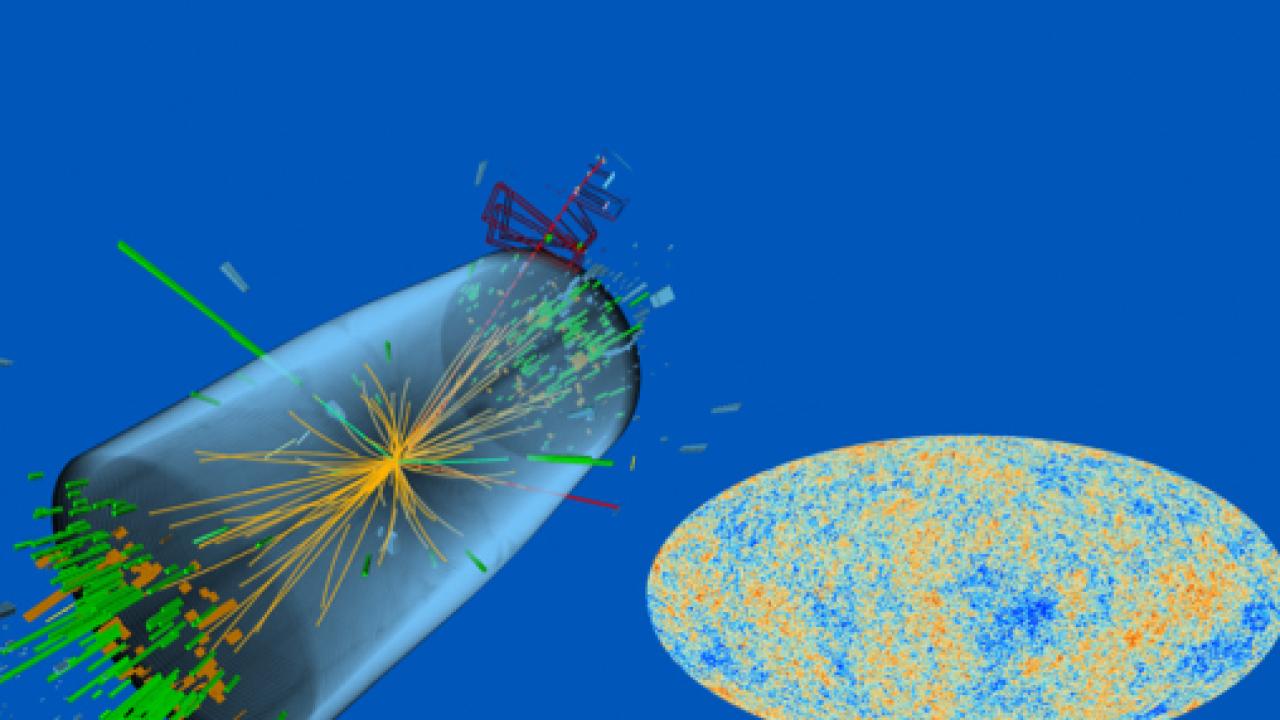
Two topics dominated the String Phenomenology 2014 conference
(StringPheno 2014) held at ICTP from 7 to 11 July 2014: F-theory,
one of the more technical topics in string theory, and cosmology,
in light of the recently announced BICEP 2 results. Held every year
at different locations, the String Phenomenology conference aims to
bring together researchers whose main research focus is to connect
string theory with particle physics and cosmology. This year,
a time when string phenomenology is at the cusp of some exciting
advances, leaders in the field gathered at ICTP to lecture on and
discuss about the trending topics in the field.
"String phenomenology is the bridge between the more mathematical
aspects and actual data observed at accelerators and
observatories," says Luis Ibanez, Universidad Autonoma de Madrid,
Spain, who gave an overview lecture at the conference summarizing
the talks of this year's StringPheno conference. Mirjam Cvetic,
University of Pennsylvania, USA, was one of the speakers whose talk
focused on some mathematical aspects of string theory: advances in
F-theory. "At this time we are walking hand-in-hand with
mathematicians and developing new techniques to connect string
theory with particle physics," she says.
In addition to this mathematical facet of string theory, the
discussions at the conference were greatly influenced by the
release of the BICEP 2 results, the Planck data due to be released
soon and the LHC ready to start its scheduled run next year. Ibanez
says that the time is right for string phenomenologists to put
their tools to test. "I believe string theory is the theory that is
best situated to address what the implications of these
experimental observations are," he says.
Dieter Lüst, Ludwig Maximilians University of Munich, Germany,
agrees. "String theory tries to explain the fundamental laws of
nature, and, in my opinion is, so far, the only framework that is
developed well enough to address some important questions in
particle physics and cosmology," he says. Lüst's own research
interests include "stringy features of generalised geometry", and
he gave a talk on double field theory and non-geometric string
backgrounds at the conference.
In keeping with the main aim of StringPheno conferences, talks of
the 2014 edition gave participants insights into very specific ways
that string phenomenology can be used to understand aspects of
particle physics and cosmology. "There is a lot of really
interesting phenomenology that we can inform people about,
including our colleagues working on neutrino physics," says
theoretical physicist Burt Ovrut, University of Pennsylvania, USA,
who is well known in the field for his work on heterotic string
theory. Ovrut's talk was on how string theory can provide tools to
determine neutrino mass hierarchy. "My guess is that when one
starts looking at the regime that the LHC will be looking at when
it is switched on, you will see new phenomenology of various kinds,
and neutrino mass hierarchy will be just one of them."
One of the speakers who lectured on string cosmology was Hans
Peter Nilles, University of Bonn, Germany. String cosmologists are
eagerly awaiting the fate of the BICEP 2 results as only a
particular class of string inflation models, called large field
inflation models, would remain relevant if BICEP 2 results are
verified. Nilles' talk focused on one class of such inflationary
models, "Axion Monodromy." "Axion Monodromy is a certain way
of having a large field range but in a controlled way. In some way
[the field] is like a spiral staircase," he explains. In simple
words, the field remains confined in a small circumference,
but as it spirals down it still covers a large distance.
Many of these prominent speakers say that a crucial point for the
future of string phenomenology will be the experimental
observations of BICEP 2, Planck and LHC. And they all agree these
are exciting times for the field. "These times for string
phenomenology are like the sixteenth and seventeenth centuries,
when the explorers were discovering new lands and charting the
world. We [phenomenologists] are charting solutions that string
theory can provide," says Ibanez.
More details, lecture notes and talk abstracts are available on
the String Phenomenology 2014 website.
















